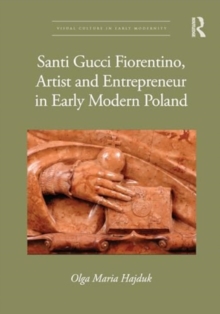
Pieter Bruegel the Elder : Art Discourse in the Sixteenth-Century Netherlands Hardback
by Todd M. Richardson
Part of the Visual Culture in Early Modernity series
Hardback
Description
Pieter Bruegel the Elder: Art Discourse in the Sixteenth-Century Netherlands examines the later images by Bruegel in the context of two contemporary discourses - art theoretical and convivial.
The first concerns the purely visual interactions between artists and artistic practices that unfold in pictures, which often transgress the categorical boundaries modern scholars place on their work, such as sacred and profane, antique and modern, and Italian and Northern.
In this context, the images themselves - those of Bruegel, his contemporaries and predecessors - make up the primary source material from which the author argues.
The second deals with the dialogue that occurred between viewers in front of pictures and the way in which pictorial strategies facilitated their visual experience and challenged their analytical capabilities.
In this regard, the author expands his base of primary sources to include convivial texts, dialogues and correspondences, and texts by rhetoricians and Northern humanists addressing art theoretical issues. Challenging the conventional wisdom that the artist eschewed Italianate influences, this study demonstrates how Bruegel's later peasant paintings reveal a complicated artistic dialogue in which visual concepts and pictorial motifs from Italian and classical ideas are employed for a subject that was increasingly recognized in the sixteenth century as a specifically Northern phenomenon.
Similar to the Dutch rhetorician societies and French Pléiade poets who cultivated the vernacular language using classical Latin, the function of this interpictorial discourse, the author argues, was not simply to imitate international trends, a common practice during the period, but to use it to cultivate his own visual vernacular language.
Although the focus is primarily on Bruegel's later work, the author's conclusions are applied to sketch a broader understanding of both the artist himself and the vibrant artistic dialogue occurring in the Netherl
Information
-
Available to Order - This title is available to order, with delivery expected within 2 weeks
- Format:Hardback
- Pages:272 pages
- Publisher:Taylor & Francis Ltd
- Publication Date:08/11/2011
- Category:
- ISBN:9780754668169
Other Formats
- Paperback / softback from £53.99
Information
-
Available to Order - This title is available to order, with delivery expected within 2 weeks
- Format:Hardback
- Pages:272 pages
- Publisher:Taylor & Francis Ltd
- Publication Date:08/11/2011
- Category:
- ISBN:9780754668169










